Oise-san Confectionery Expo: Behind the scenes of making giant craft confectionery, hear from the leaders of 5 teams
掲載日:2017.04.21
The biggest highlight of the National Confectionery Expo Mie (Oise-san Confectionery Expo) is the huge craft confectionery display that will be featured in the ``Confectionery Theme Pavilion'' inside the venue.
More than 100 Japanese and Western confectionery artisans from within the prefecture have recreated the world of Hiroshige Utagawa's ukiyoe painting ``Ise Shrine Miyagawa Ferry'', which depicts a crowded shrine crowd, on an impressive scale of about 10 meters wide and 5.5 meters deep. Reproduced with.
We will introduce you to the behind-the-scenes stories of all five teams who worked on each part of the giant craft confectionery.
(Article provided by: Ise Shimbun)
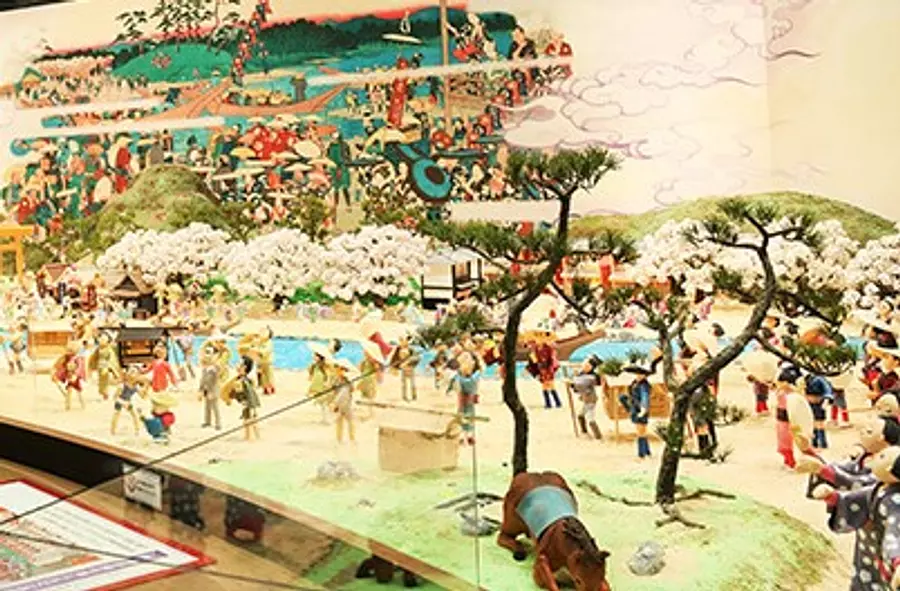
More than 100 Japanese and Western confectionery artisans from within the prefecture have recreated the world of Hiroshige Utagawa's ukiyoe painting ``Ise Shrine Miyagawa Ferry'', which depicts a crowded shrine crowd, on an impressive scale of about 10 meters wide and 5.5 meters deep. Reproduced with.
We will introduce you to the behind-the-scenes stories of all five teams who worked on each part of the giant craft confectionery.
(Article provided by: Ise Shimbun)
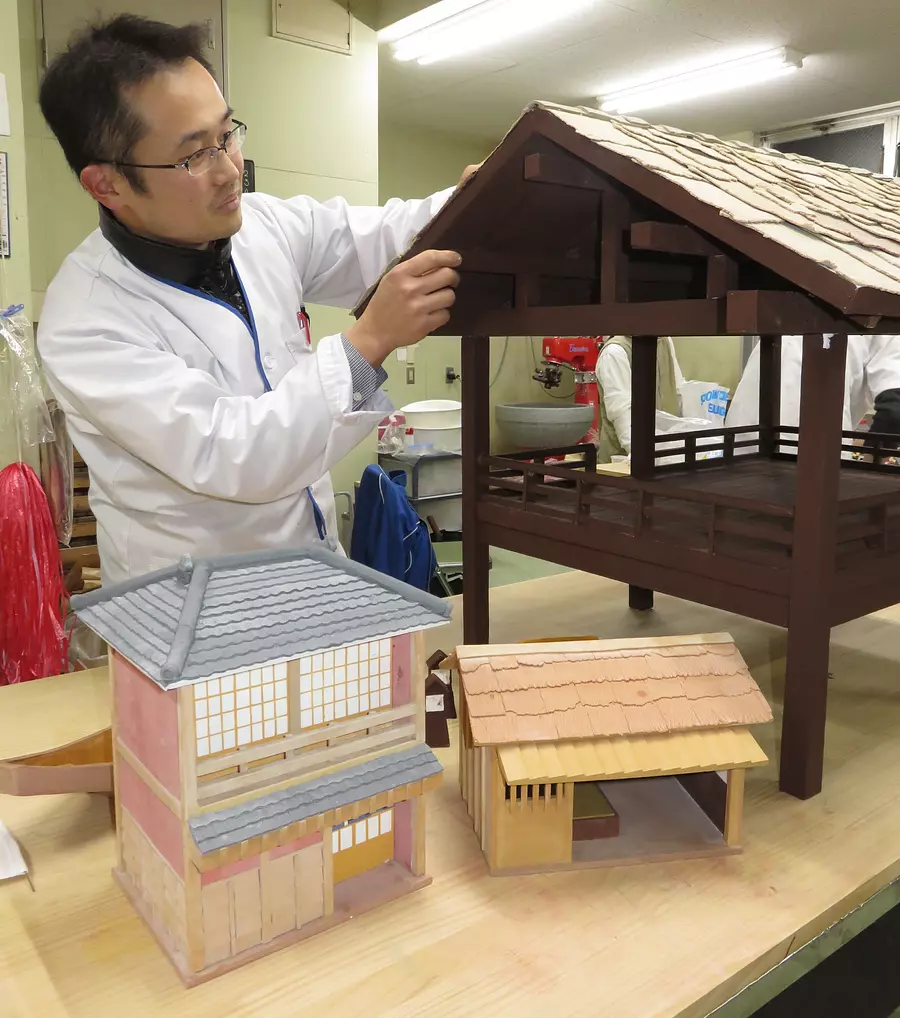
The 14 volunteer Japanese and Western confectionery craftsmen from the Nansei area were in charge of buildings such as teahouses and ferryboats along the highway, the main hall and UjibashiBridge of Naiku of IseJingu, and the garrison quarters of the Furuichi red-light district. The largest arbor is 1 meter long, 70 cm wide, and 70 cm high.
Although it is a confectionery, the work is like building a building. In order to express three-dimensionality from the two-dimensional Ukiyo-e, the leader, Mr. Nomura, put a lot of effort into creating blueprints.
``I went to see the buildings of the shrine and consulted books.I took advice from my younger brother, who is a designer, and had a hard time creating the drawings,'' he recalls.
Mix powdered sugar, cornstarch, and gelatin to make a dough, then cut out the parts according to the drawing. Let it dry, make adjustments down to the millimeter by sanding it with sandpaper, and assemble it.
He used various tools to create the texture of the roof tiles and wood, and added color with an airbrush and brush. We don't skimp on even the smallest details such as shoji screens and lanterns and interior decoration. Nomura laughs and says, ``Team Building is also known as Nansei Construction.'' In the summer, when the humidity got high, it started to melt and I had to recreate it.
``I worked hard on this work even while working my regular job and sleeping.I hope to surprise many visitors with this large-scale work created by the combined efforts of the craftsmen.''
[Photo description] A craftsman who creates buildings such as teahouses and gazebos with craft confectionery in IseCity
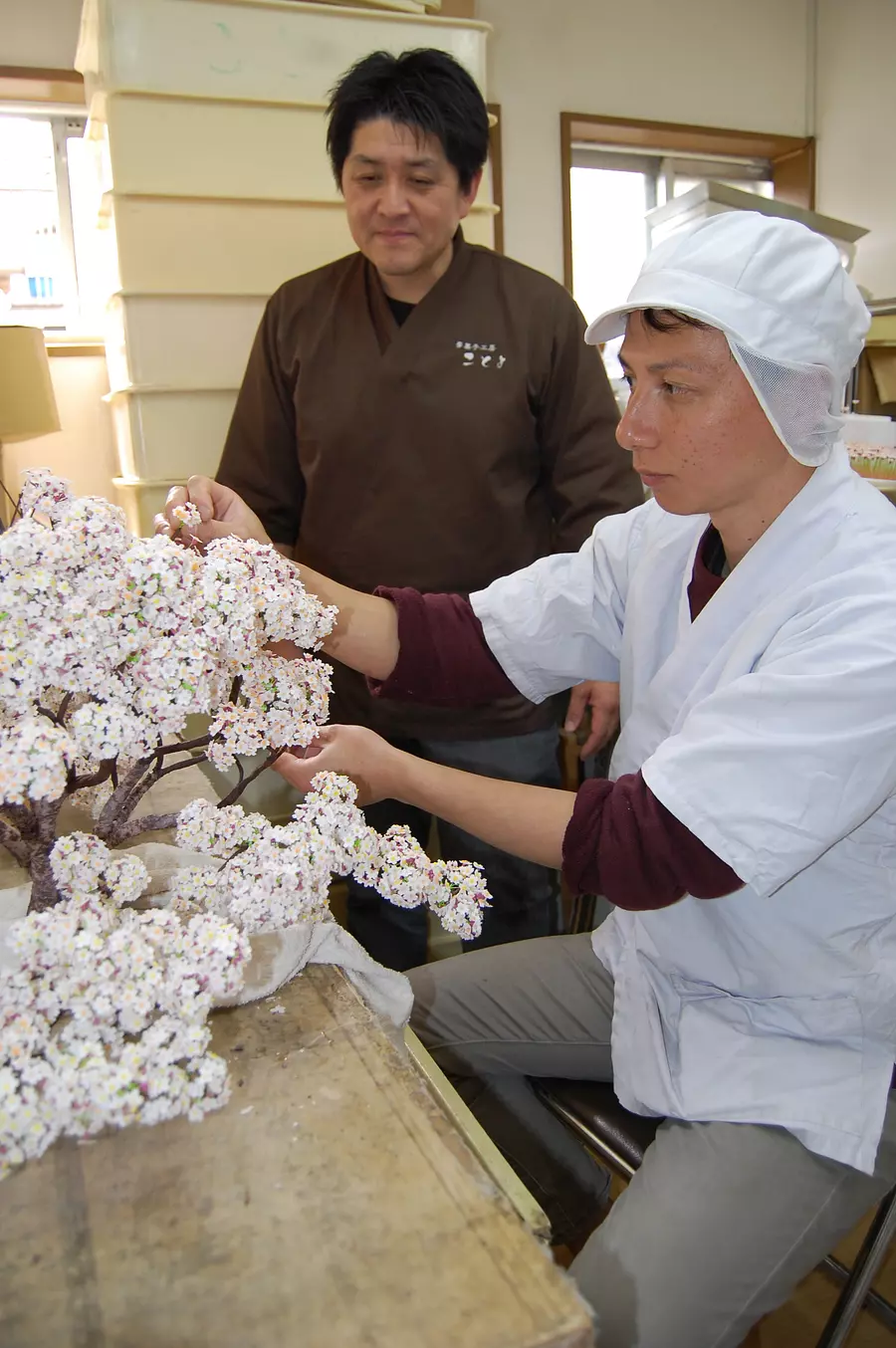
A total of 28 people, including the owners of 15 Japanese confectionery shops in the Hokusei area and young craftsmen working at the shops, created 16 ``cherry blossoms'' as the team name suggests. The flowers and stems are all made from ``Unpei,'' which is made by mixing powdered sugar and Kanbai powder, adding hot water, and kneading the mixture.
For the flowers, cut out the thinly rolled Unpei dough using a cutting die, add veins to each flower one by one with a push stick, and attach Irako (finely crushed glutinous rice) to serve as the stamens. It is surprising to hear that there are 6,000 flowers on each branch, and a total of 100,000 flowers.
Even when viewed from the closest location at the venue, it was impossible to see the veins and stamens of the flowers, but we continued our daunting work without making any compromises.
One of the members, Hisashi Oishi (38), the factory manager of ``Yume Confectionery Studio Kotoyo'' in YokkaichiCity recalls, ``It was difficult to finish it exactly as I had imagined.''
The ukiyo-e that is the subject of this work does not actually depict cherry blossoms. The world depicted by Hiroshige Utagawa and today's Miyagawa, which is popular as a famous spot for cherry blossoms, have come together in this craft confectionery.
President Okamoto, the leader of the team, said, ``I hope you will come to the venue and see for yourself the skills that Japanese and Western confectionery artisans have put together.''
[Photo description] Factory manager Oishi (right) making the product and President Okamoto watching the process at Yume Confectionery Studio Kotoyo in YokkaichiCity cho, Yokkaichi City
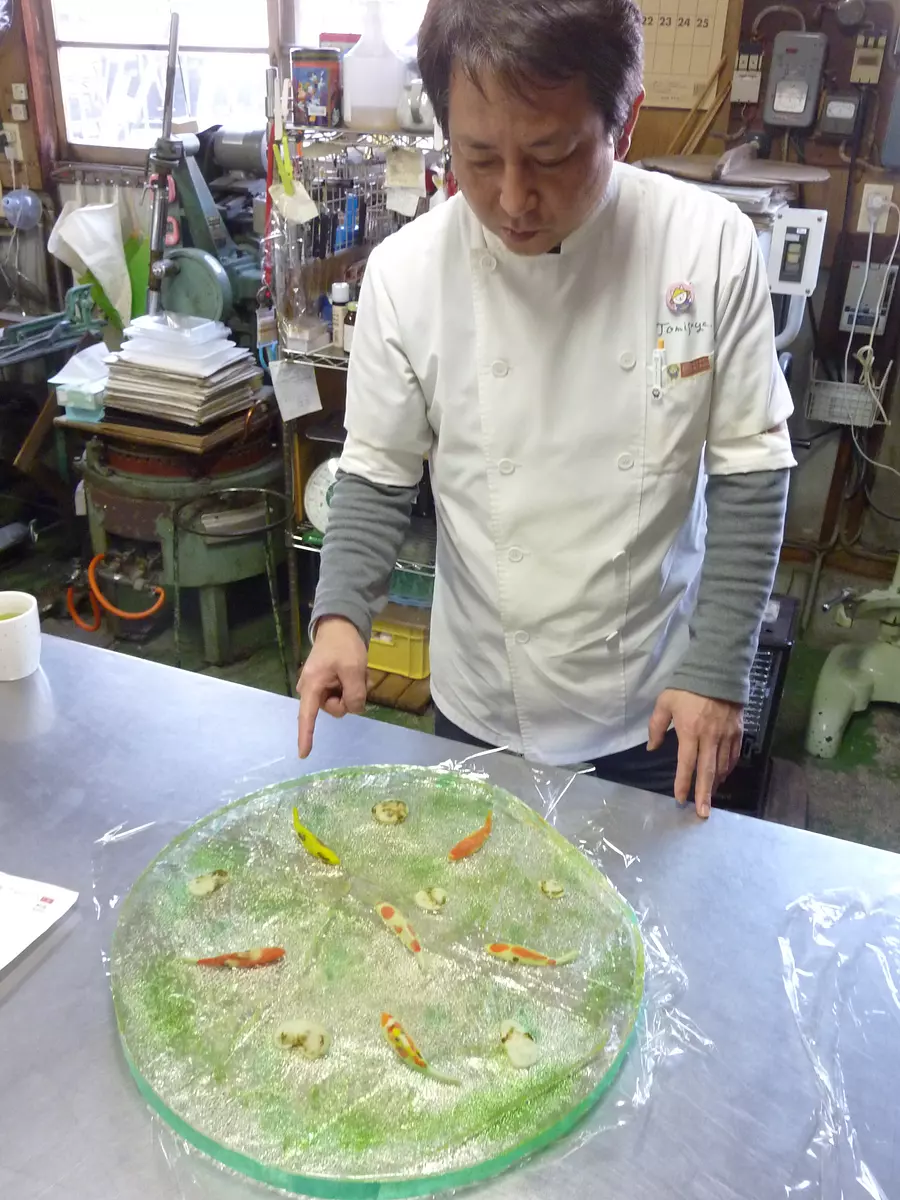
Ken Hayakawa was in charge of creating the symbol exhibition, and was in charge of creating natural objects such as mountains, rivers, the ocean, Meotoiwa(rocksofthemarriedcouple), and underwater creatures.
In particular, I struggled to figure out how to express rivers and the ocean with confectionery, but I took on the unprecedented challenge of expressing water through the glittering state of candy. As a confectioner, I am particular about expressing natural products in confectionery.
Candy absorbs moisture from the air and becomes sticky, a phenomenon known in the industry as "crying." We expressed rivers and oceans with its "crying" sparkling texture.
The state of candy tends to change depending on the humidity, and it is difficult to maintain the same state for a long period of time, so we repeated production experiments during the same climate last year and came up with the optimal method.
The mountain in the background of the exhibition was made by spreading sponge (castella) into the shape of a mountain and pasting rakugan on top. A total of approximately 12 tons of raw materials, including sugar, are used to create the symbol display alone.
``In addition to myself, who created the natural objects, craftsmen from Mie Prefecture also worked together to make cherry blossoms, pine trees, buildings, and dolls using their own techniques.I hope you will come and see the many techniques that they used. ”.
[Photo caption] Mr. Hayakawa introducing a part of the river made from candy in Tenkasuka, YokkaichiCity
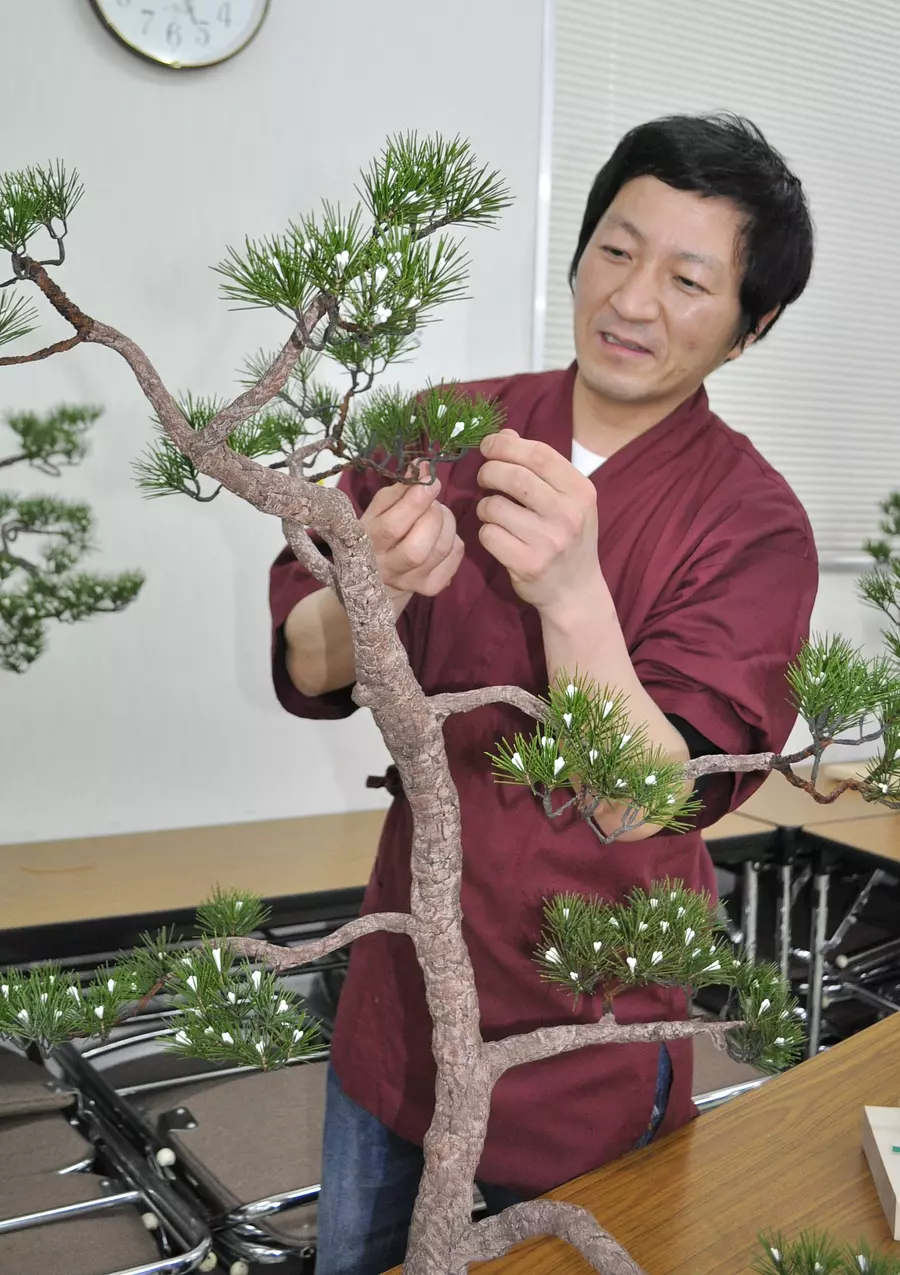
17 Japanese confectionery artisans from the Nakasei area created 31 large and small pine trees that add depth to the bustling scenery of Ise pilgrims.
Each tree requires 2,500 small pine needles and 7,000 large ones, making a total of 100,000 pine needles.We started making them in March last year.
The dough made from mochi powder, sugar, and red bean paste is rolled out into thin wires from the size of rice grains to form pine needles, which are then tied together into branches. For the trunk, fabrics with different textures are combined to carefully express the cracks in the epidermis.
Craft confectionery often depicts a well-shaped bonsai or a pine tree in a garden, but this time the motif is a natural standing tree. Since the shape of the pine trees differs depending on where they grow, they travel to various locations to observe the pine trees, and in some cases construct wire frameworks on the spot.
The never-ending task of harvesting 100,000 pine needles was extremely grueling, but they were able to get through it with the support of two sub-leaders, Masahiro Ito and Hiromichi Yamakawa.
The highlight is the three pine trees near Meotoiwa(rocksofthemarriedcouple) in FutamiuraBeach. The large one measures 90cm in both width and height. Also worth noting is the 13 pine trees on the hill whose branches are shaped like Ukiyoe.
``Although the pine tree plays a supporting role, we made the size so that it feels deeper than it actually is.I want people to see the results of everyone working together.''
[Photo description] Representative Kawashima making pine trees in TsuCity
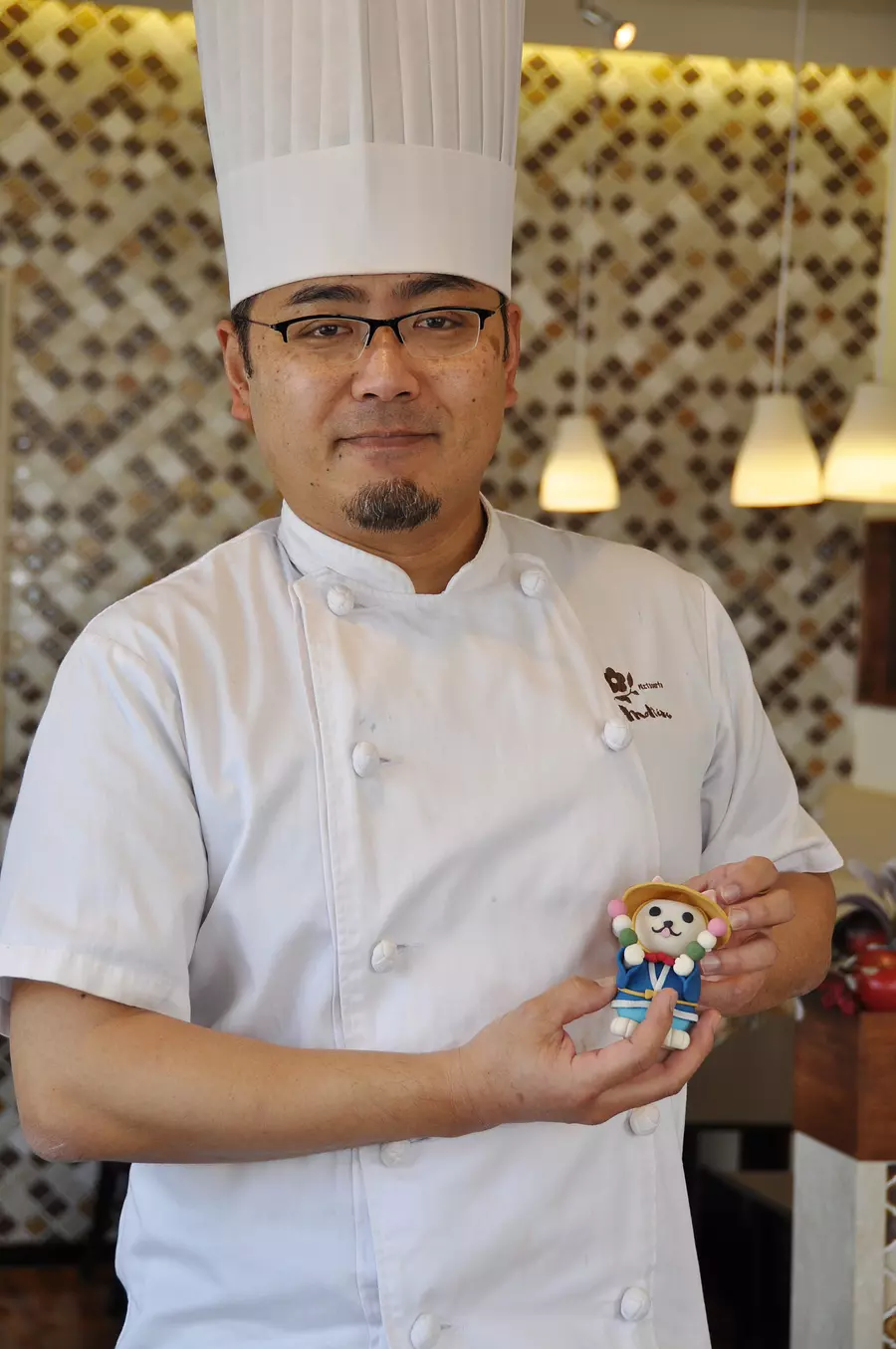
Using Hiroshige Utagawa's ukiyo-e painting ``Ise Shrine Miyagawa Passage'' as a motif, 49 team pastry chef members took on the challenge of making giant craft confectionery, creating over 250 dolls of men and women of all ages who came to pray from all over the country.
Preparations began about a year in advance, and it took three months to finalize the materials. Over time, the prototype dolls began to crack and fade. Through trial and error, we were able to improve the strength and ease of working with small parts such as the doll's hands and fingers by adjusting the proportions of pastillage dough, which is made from sugar and gelatin, and marzipan dough, which is made by mixing powdered almonds and syrup.
The doll production is divided into parts such as the head, body, limbs, etc., and the style is unified. The dolls are full of expressions, such as people boarding a ferry, a boatman, and a man and woman relaxing in a teahouse.
The scenery of mountains, rivers, pines, and cherry blossoms in full bloom is faithfully recreated by Japanese confectionery artisans based on illustrations, creating a lively scene where you can almost hear the dolls chatting.
``We want you to enjoy the ``Japanese-Western fusion'' of realistic pine and cherry blossoms and dreamy and adorable dolls.''
[Photo caption] Team pastry chef Takeuchi leader in Sasagawa, YokkaichiCity
○Event information: Oise-san Confectionery Expo 2017 special site
○Special article: Oise-san Confectionery Expo 2017 is underway! Special feature on sightseeing spots in Mie Prefecture that you should visit together with the Confectionery Expo
○Interview report: Japan's largest sweets festival "Oise-san Confectionery Expo 2017" has begun! I immediately went for an interview!
○Interview report: Interview with Japanese and Western confectionery artisans at Oise-san Confectionery Expo “Taking on giant craft confectionery”
[Model course of Oise-san Confectionery Expo]
・ A trip to enjoy Ise, Toba, Shima and Ise-san Confectionery Expo 2017
・ Visit IseJingu with Oise-san Confectionery Expo 2017! Courses by train and bus
Please also take a look at the video that introduces the charm of Oise-san Confectionery Expo.
The National Confectionery Exposition has been held approximately once every four years in order to pass on the history and culture of sweets to future generations and promote the confectionery industry.
It began in Tokyo in 1911 as the ``1st Imperial Confectionery Candy Exhibition,'' and this is the first time in 40 years that it has been held in the Tokai area since Shizuoka in 1977, and the first time in Mie.
Please come by all means.
Oise-san Confectionery Expo's character "Ise Wanko" is waiting for you!
| Category | |
|---|---|
| area |



